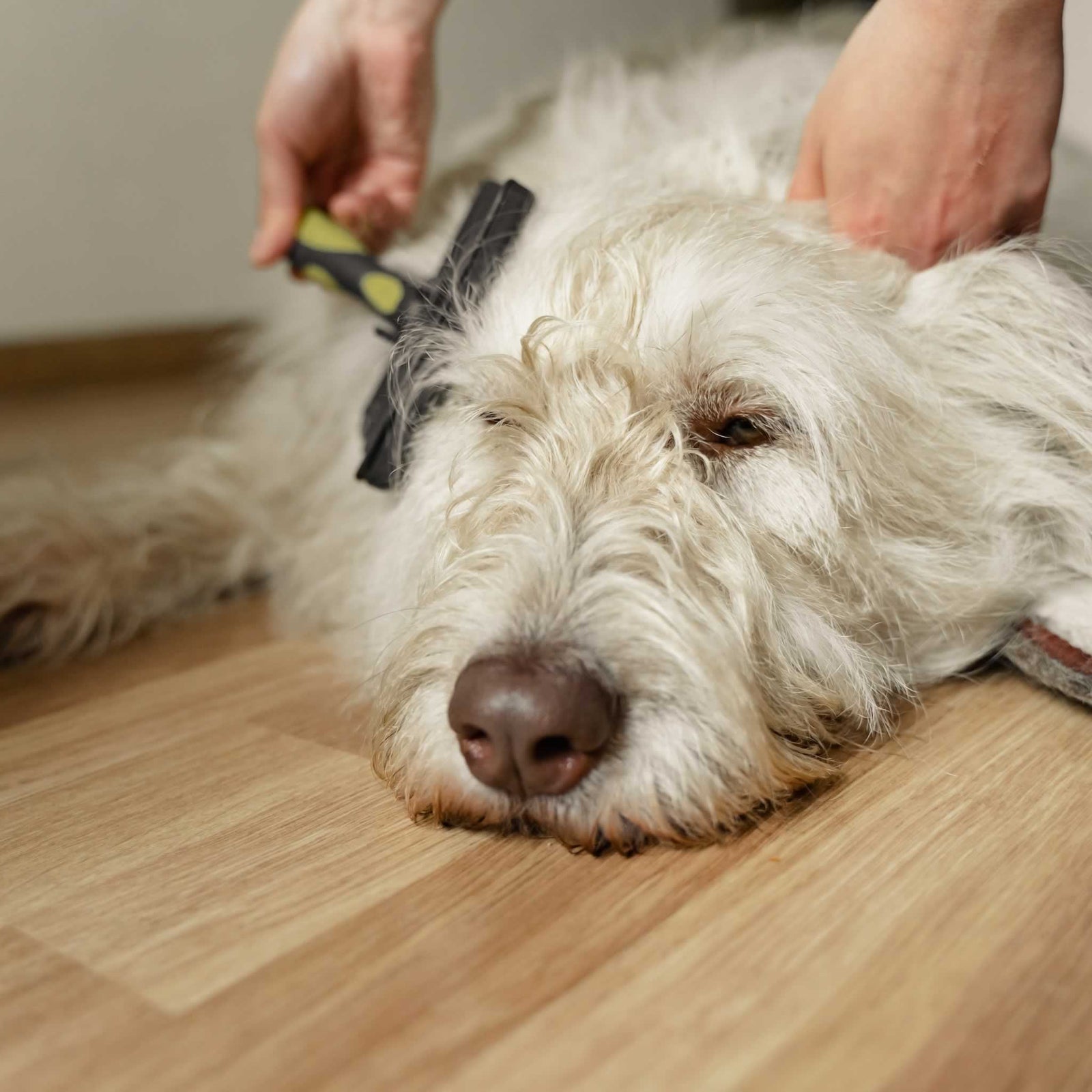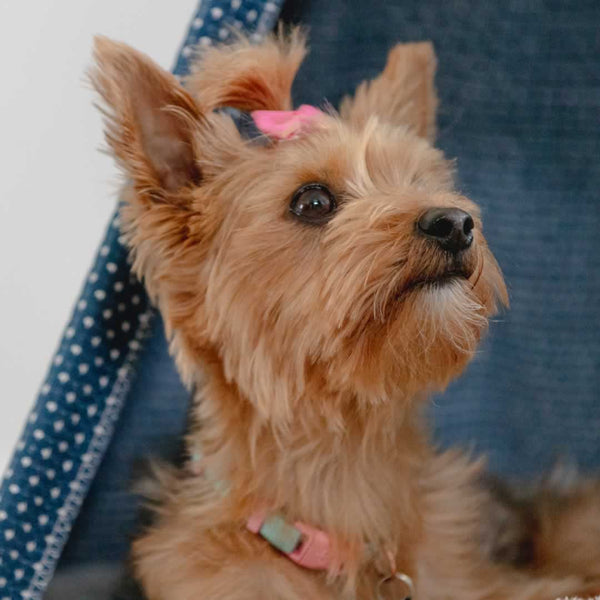Your Cart is Empty

How Often Should You Brush Your Dog?
by Pickle J. Sniffington October 21, 2022 3 min read
At Pickle & Polly, we are fans of all dog breeds regardless of the length of their coat. However, we also know that some people will choose a dog breed with short fur because they are not fond of extended dog grooming sessions. Others look forward to weekly dog grooming as an opportunity to bond with their pet.
Whichever canine breed you own, you've likely found yourself wondering; how often should you brush your dog? As it turns out, regular dog grooming, no matter the length of the coat, is part of responsible dog ownership. This article will discuss why you should groom your pet, its benefits, and how often you should groom your dog, so they always have a clean, healthy, and shiny coat.
Why Regular Brushing is Good for Your Dog
Dog grooming can keep your pet healthy as well as improve your relationship. Grooming lets you become familiar with the dog's body, which helps you quickly notice anomalies that might need attention from a vet.
Washing your pet is a critical part of dog grooming, but unless the dog is muddy after some wet weather or has otherwise gotten into something they shouldn't, you should only bathe them every month or two. Too much cleaning and shampoo exposure will remove the dog's natural oils, may damage your dog's coat, and can dry out their skin. Always use a shampoo specially formulated for dogs.
Brushing your canine regularly distributes natural oils evenly over the body, prevents matting, stimulates the skin, and removes dead, dry, and flaky skin. Brushing also removes grass, pollen, loose hair, and dirt, and prevents nasty tangles and matting.
Getting Started with Dog Grooming
Determining how much time to leave between brushing your dog's coat isn't as simple as ensuring the hair does not get tangled and matted. Shorter-haired dogs need less attention than dogs with long coats, but all dogs will benefit.
Most professional dog groomers recommend professional grooming sessions every 6 to 8 weeks. How often will depend a lot on how long you like their fur, how fast it grows, and your dog’s lifestyle (does it regularly swim and run through the forest). Regularly brushing your dog between grooming sessions means you will not need to go as often.
In general, brush a dog with a smooth, short coat at least once every couple of weeks, and once a week for densely furred but short coated dogs. Dogs with longer coats require more frequent brushing at least a couple of times a week.
You will need to use the right brush type for your dog's coat. A bristle brush has a flat base with soft, straight bristles. It doesn't penetrate deeply, so it's great for short-haired dogs. Pin or wire brushes use straight bristles of metal or wood on a rubber base. This brush is a good choice for dogs with curly coats and is also excellent for quickly drying long fur. Large tooth combs are used on long coats and make detangling and removing loose hair from thick undercoats relatively easy.
Brushing should be something you both enjoy so always use gentle strokes that brush down and away from the dog's skin while following the direction of the coat's growth. Apply a coat conditioner to tough tangles and leave for several minutes before using a wide tooth comb to detangle them.
Never cut matting out of your dog's fur. Use a de-matting comb before you start with their regular dog grooming brush. Gentle picking motions will break up the mat without causing any discomfort for your pet.
Make sure you give your dog lots of praise and petting while you brush. Reward them with a delicious treat when you are done, and they will always look forward to the next session.
Join Our Furry Pals Program!
Subscribe to our newsletter for the latest news, access to new products, and exclusive discounts!

Join Our Furry Pals
Sign up to get the latest news on sales, new products, and more!

